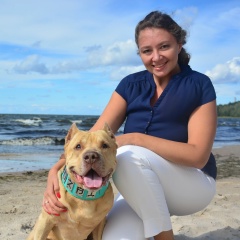Вот как описывает Райх сегменты защитного панциря:
1. Глаза. Неподвижный лоб, «пустые» глаза. Сегмент удерживает плач.
2. Рот. Слишком сжатая или неестественно расслабленная нижняя челюсть. Этот сегмент удерживает плач, крик, гнев. На лице может быть какая-нибудь гримаса.
3. Шея. Сегмент удерживает гнев, крик и плач.
4. Грудь. Широкие мышцы груди, плеч, лопаток, вся грудная клетка и руки. Сегмент удерживает смех, гнев, печаль и страстность.
5. Диафрагма. Диафрагма, солнечное сплетение, внутренние органы. Защитный панцирь особенно заметен в положении лежа на спине. Между нижней частью спины и кушеткой остается значительный промежуток. Выдох сделать труднее, чем вдох. Сегмент удерживает сильный гнев.
6. Живот. Широкие мышцы живота м мышцы спины. Напряжение мышц спины свидетельствует о страхе нападения. Сегмент удерживает злость и неприязнь.
7. Таз. Все мышцы таза и нижних конечностей. Чем сильнее защитный панцирь, тем более таз вытянут назад. Ягодичные мышцы напряжены и болезненны. Сегмент подавляет ощущение сексуального удовольствия и сексуальное возбуждение, а также гнев. Пережить сексуальное удовольствие невозможно, пока не разрядится гнев в тазовых мышцах.
(M. E. Литвак Из Ада в Рай Избранные лекции по психотерапии (учебное пособие)
1. Глаза. Неподвижный лоб, «пустые» глаза. Сегмент удерживает плач.
2. Рот. Слишком сжатая или неестественно расслабленная нижняя челюсть. Этот сегмент удерживает плач, крик, гнев. На лице может быть какая-нибудь гримаса.
3. Шея. Сегмент удерживает гнев, крик и плач.
4. Грудь. Широкие мышцы груди, плеч, лопаток, вся грудная клетка и руки. Сегмент удерживает смех, гнев, печаль и страстность.
5. Диафрагма. Диафрагма, солнечное сплетение, внутренние органы. Защитный панцирь особенно заметен в положении лежа на спине. Между нижней частью спины и кушеткой остается значительный промежуток. Выдох сделать труднее, чем вдох. Сегмент удерживает сильный гнев.
6. Живот. Широкие мышцы живота м мышцы спины. Напряжение мышц спины свидетельствует о страхе нападения. Сегмент удерживает злость и неприязнь.
7. Таз. Все мышцы таза и нижних конечностей. Чем сильнее защитный панцирь, тем более таз вытянут назад. Ягодичные мышцы напряжены и болезненны. Сегмент подавляет ощущение сексуального удовольствия и сексуальное возбуждение, а также гнев. Пережить сексуальное удовольствие невозможно, пока не разрядится гнев в тазовых мышцах.
(M. E. Литвак Из Ада в Рай Избранные лекции по психотерапии (учебное пособие)
Here's how Reich describes the protective shell segments:
1. The eyes. Fixed forehead, "empty" eyes. The segment keeps crying.
2. Mouth. Too tight or unnaturally relaxed lower jaw. This segment keeps crying, screaming, angry. There may be some kind of grimace on the face.
3. The neck. The segment holds anger, screaming and crying.
4. The chest. Broad muscles of the chest, shoulders, shoulder blades, entire chest and arms. The segment holds laughter, anger, sadness and passion.
5. Aperture. Aperture, solar plexus, internal organs. The protective shell is especially noticeable when lying on your back. A significant gap remains between the lower back and the couch. Exhaling is harder to do than inhaling. The segment holds strong anger.
6. Belly. Broad muscles of a stomach and muscles of a back. Tension of the back muscles indicates a fear of attack. The segment holds anger and hostility.
7. Taz. All muscles of the pelvis and lower limbs. The stronger the protective shell, the more the pelvis is pulled back. The gluteal muscles are tense and painful. The segment suppresses feelings of sexual pleasure and sexual arousal, as well as anger. It is impossible to survive sexual pleasure until anger in the pelvic muscles is discharged.
(M. E. Litvak From Hell to Paradise Selected Lectures on Psychotherapy (study guide)
1. The eyes. Fixed forehead, "empty" eyes. The segment keeps crying.
2. Mouth. Too tight or unnaturally relaxed lower jaw. This segment keeps crying, screaming, angry. There may be some kind of grimace on the face.
3. The neck. The segment holds anger, screaming and crying.
4. The chest. Broad muscles of the chest, shoulders, shoulder blades, entire chest and arms. The segment holds laughter, anger, sadness and passion.
5. Aperture. Aperture, solar plexus, internal organs. The protective shell is especially noticeable when lying on your back. A significant gap remains between the lower back and the couch. Exhaling is harder to do than inhaling. The segment holds strong anger.
6. Belly. Broad muscles of a stomach and muscles of a back. Tension of the back muscles indicates a fear of attack. The segment holds anger and hostility.
7. Taz. All muscles of the pelvis and lower limbs. The stronger the protective shell, the more the pelvis is pulled back. The gluteal muscles are tense and painful. The segment suppresses feelings of sexual pleasure and sexual arousal, as well as anger. It is impossible to survive sexual pleasure until anger in the pelvic muscles is discharged.
(M. E. Litvak From Hell to Paradise Selected Lectures on Psychotherapy (study guide)
У записи 2 лайков,
0 репостов.
0 репостов.
Эту запись оставил(а) на своей стене Любовь Гордиенко























